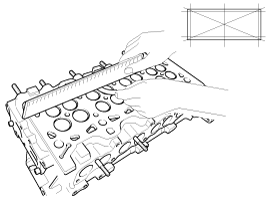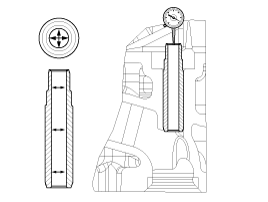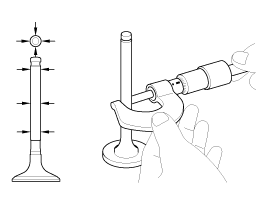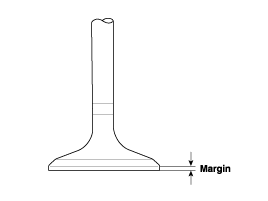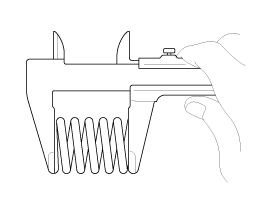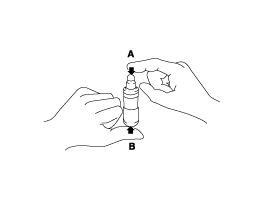Inspect for flatness.
Using a precision straight edge and feeler gauge, measure the surface the contacting the cylinder block and the manifolds for warpage.
Flatness of cylinder head gasket surface :
Less than 0.03 mm (0.0012 in) for width
Less than 0.09 mm (0.0035 in) for lengthh
Less than 0.012 mm (0.0005 in) for a section of 50 mm x 50 mm (1.9685 in x 1.9685 in)
Flatness of manifold mating surface :
Less than 0.025 mm (0.0010 in) for width
Less than 0.160 mm (0.0063 in) for length
Less than 0.013 mm (0.0005 in) for a section of 25 mm x 25 mm (0.9843 in x 0.9843 in)
